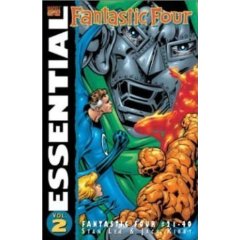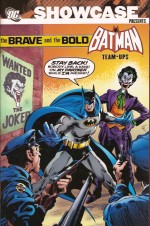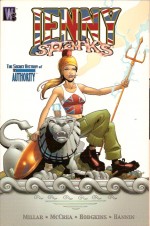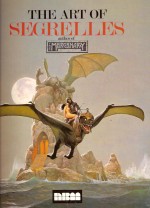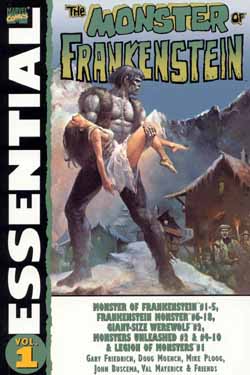
By various (Marvel)
ISBN: 978-0-7851-1634-9
There’s a tremendous amount of value in these phone-book sized cheap’n’cheerful monochrome Essential editions. This particular collection reprints Marvel’s 1970’s interpretation of the Mary Shelly classic from a time when the censorious Comics Code Authority first loosened some of its strictures banning horror material from the pages of comics.
Much American comic art should only be seen in colour – that is after all how it was intended to be – but in this instance that moody black and white only serves to enhance the groundbreaking artwork of Mike Ploog. A young find who had worked with Will Eisner, Ploog illustrated Gary Friedrich’s pithy adaptation of the original novel before moving on to new ventures as the strip graduated to in-house originated material.
‘Mary Shelley’s Frankenstein!’ debuted with a January 1973 cover-date and introduced Robert Walton IV, great grandson of the sea-captain who had rescued scientist Victor Frankenstein from the polar Ice and was regaled with the incredible tale of “the Modern Prometheus”. Leading a band of rogues, cutthroats and sullen Inuit, Walton finds the fabled monster in 1898, interred in a block of ice, and brings it aboard his ice-breaker. He recounts the story to the fascinated cabin-boy unaware of the fear and discontent simmering below decks…
A bloody mutiny in a terrible storm opens the second issue as the burning ship founders. Meanwhile the flashbacked tale of the tragic Victor reaches the terrible moment when the monster demands a mate. The guilt-plagued scientist complies only to balk at the last and destroy his second creation. ‘Bride of the Monster!’ concludes with the creature’s fearsome vengeance on his creator paralleling the grim fate of the storm-tossed ship…
The Monster of Frankenstein #3, ‘The Monster’s Revenge!’ has the reawakened creature freed from its ice-tomb and hearing the continuation of his life-story from Walton’s lips as the last survivors struggle to find safety in the Arctic wastes. ‘Death of the Monster!’ (with inker John Verpoorten taking some of the deadline pressure off the hard-pressed Ploog) turns the tables as the monster reveals what happened after the polar showdown with its creator, which leads to a new beginning when Walton reveals that the Frankensteins were not all eradicated by the Monster’s campaign of vengeance. The blood-line continued…
A new direction began with issue #5 as ‘The Monster Walks Among Us!’. Making his way south the tragic creature arrived in a Scandinavian village in time to save a young woman from being burned at the stake on a blazing longboat, only to rediscover that when villagers pick up pitchforks and torches to go a-screamin’ and a-hollerin’ for blood, they usually have a good reason…
With issue #6 the comic-book renamed itself The Frankenstein Monster. The undying creature reached the village of Ingolstadt a century after it wreaked bloody vengeance on his creator’s loved ones. ‘…In Search of the Last Frankenstein!’ is a mini-classic of vintage horrors scripted as usual by Friedrich but plotted, pencilled and inked by Ploog who was reaching an early peak in his artistic career. It was also his last issue.
Ploog was followed by John Buscema and Bob Brown before Val Mayerik settled as regular artist and Friedrich gave way to Doug Moench, a writer once synonymous with Marvel’s horror line.
Issues #7, 8 and 9 bowed to the inevitable and pitted the Monster against Marvel’s top horror star (albeit 75-ish years prior to his contemporary adventures). Beginning with ‘The Fury of a Fiend!’, continuing in ‘My Name is… Dracula!’ and concluding with ‘The Vampire Killers!’, this is a classy tribute to the old Universal movies and then current Hammer Films in equal measure wherein the misunderstood misanthrope battled an undying evil for ungrateful humanity, consequently losing the power of speech; and becoming more monstrous in the process.
Produced by Friedrich, John Buscema and John Verpoorten these tales lacked the atmosphere of Ploog’s tenure, but the action was very much in the company’s house-style. With #10 (inked by Frank Giacoia and Mike Esposito) the creature finally found ‘The Last Frankenstein!’ much to his regret.
With number #11 (‘…And in the End…!?’ illustrated by Bob Brown & Vince Colletta) and #12’s ‘A Cold and Lasting Tomb’ by Doug Moench, Val Mayerik and Colletta) the Monster finished his historical adventures by falling into a glacial sea and froze into another block of ice only to be revived, Captain America-like, in modern times.
My only real quibble in a book that re-presents the entire 18-issue run of the comic, plus the crossover from Giant-Sized Werewolf #2 and all the strips from the adult-oriented horror magazines Legion of Monsters and Monsters Unleashed, is that a little more attention to publishing in chronological order might have made for a smoother read.
If you’re the type who prefers to experience his or her yarns in the proper sequence this is the stage where flipping to the back is necessary as the stories from those aforementioned Marvel magazines – which originally ran concurrently with the four-colour comic-book – can be found. Most of those adventures take place between pages 13 and 14 of The Frankenstein Monster #12!
Just reading the book however, the next thing you’ll find is a rather tame team-up/clash from Giant-Sized Werewolf #2 wherein ‘The Frankenstein Monster Meets Werewolf by Night’ (by Moench, Don Perlin and Colletta) collaterally quashing a band of run-of-the-mill West Coast Satanists in the process.
Issue #13 ‘All Pieces of Fear!’ (Moench, Mayerik and Jack Abel) shoe-horned the Monster into mid-1970s America in a tale heavy with irony as men acted like beasts and an obsessive father ignored his family whilst building his own abominations with the new science of cloning. With a hip young kid as a sidekick/spokesperson ‘Fury of the Night-Creature’ (with Dan Green inking) extended the saga by introducing I.C.O.N. (International Crime Organizations Nexus) yet another secret organisation intent on corporate conquest.
Issue #15 ‘Tactics of Death’ (with a young Klaus Janson on inks) briefly concluded the acronym agenda as the Monster and his companion Ralph mopped up the men in suits only to be shanghaied to Switzerland to meet the latest Last of the Frankensteins in ‘Code-name: Berserker!’ (with inks by Bob McLeod – who managed to handle the next issue too).
Veronica Frankenstein was still absorbed in the family business, but claims to be fixing her ancestors’ mistakes when those incorrigible I.C.O.N. bounders show up demanding her biological techniques in ‘A Phoenix Beserk!’. Beautifully inked by Mayerik and Dan Adkins, the last colour issue ended on a never-to-be completed cliffhanger (although scripter Bill Mantlo covered elements of the story in Iron Man a few years later) when the Monster and his new friend met ‘The Lady of the House’ – the utterly bonkers creature-crafter Victoria Von Frankenstein…
Perhaps the abrupt cancellation was a mercy-killing after all.
As I’ve laboriously stated above, the man-made monster also featured in a few mature reader magazines, beginning with Monsters Unleashed #2. ‘Frankenstein 1973’ (by Friedrich, Buscema and Syd Shores) relates how an obsessive young man found the Monster preserved as a carnival exhibit, but his jealous girlfriend revived it by trying to burn down the sideshow. The story continued in Monsters Unleashed #4 (by the same team and Golden-Age Great Win Mortimer). ‘The Classic Monster’ had a mad scientist actually put his brain in the monster’s skull but all was put right in #5’s ‘Once a Monster…’
Monsters Unleashed #6, by Moench and Mayerik, ‘…Always a Monster!’ wrapped up the introduction to today storyline with a good, old-fashioned Monster hunt, and lead directly to #7’s ‘A Tale of Two Monsters!’ a dark, socially relevant tale of the modern underclass, carried on in ‘Fever in the Freak House’ and concluded in #9’s ‘The Conscience of the Creature’.
The horror boom was fading by this time and Monsters Unleashed #10 was his last outing there, a superbly dark and sardonic Christmas offering complete with Elves, snow, terrorists and a Presidential assassination attempt. One final tale ‘The Monster and the Masque’ appeared in one-shot The Legion of Monsters, by Moench and Mayerik (whose painted wash-and-ink artwork for the magazine line was some of the best of his career) assisted here by Dan Adkins and Pablo Marcos. This bittersweet morality play saw the creature accidentally accepted at a fancy dress party which was ruined when a different sort of monster got carried away…
With additional pin-ups, cover illustrations and pertinent text pages from the Marvel Universe Handbook, this collection is great treat for fantasy and horror fans and should be a first choice for introducing civilians to the world of comics.
© 1973, 1974, 1975, 2004 Marvel Characters, Inc. All Rights Reserved.


